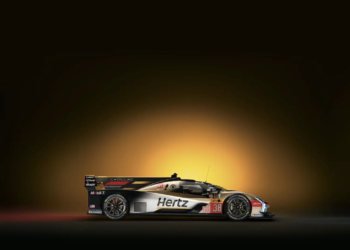Ferrari winning the 2023 centenary edition of the 24 Hours of Le Mans was a great story, as it beat Toyota and ended the Japanese-German team’s five-year winning streak at the event. But could the Italian manufacturer have achieved it without the pre-Le Mans week Balance of Performance (BoP)?
First, let’s take a step back. The ACO (Automobile Club de l’Ouest) issued its initial 2023 season BoP before the 1000 Miles of Sebring, based on simulation data for all seven cars competing in this year’s championship.
Using simulation data is a new way of determining BoP, with the “traditional” way being based on lap times. The simulated data was able to take in thousands of scenarios — more than could ever be gained by lap time data — and so it was based on a car’s ultimate potential, not its current performance.
This meant that the BoP would, theoretically, be set pre-Sebring. In addition, because of the Sebring track’s unique nature, a different BoP was set for the rounds at Portimao, Spa, and Le Mans. It could then be adjusted after Le Mans, for Monza, if any changes needed to be made, which was made clear to the teams.
While it may seem bizarre to set the BoP before any competitive action has taken place, there was good reason: to prevent any ‘sandbagging’ taking place and therefore getting a more favourable BoP for later rounds, namely Le Mans. This was possible because the BoP was based on simulation data, not lap times, which can be manipulated via sandbagging.
However, on the Wednesday before Le Mans race week, the ACO issued an updated BoP table, which it called a “correction”, as the performance gaps between teams were “greater than initially anticipated”.
This gave Toyota a 37kg weight penalty, and 24kg to Ferrari, while the LMDh-rules cars of Cadillac and Porsche received 11kg and 3kg respectively. The Peugeot 9X8, Glickenhaus 007, or Vanwall 680 did not receive any weight changes.
This change was done because the ACO deemed it necessary, without manufacturer agreement.
A source has told MotorsportWeek.com that for every 10kg of BoP weight in a Hypercar, it costs a car 0.2 seconds a lap. Doing the maths, it cost Toyota around 0.74s a lap, Ferrari 0.48s, Cadillac just over 0.22s a lap, and Porsche around 0.06s.
And, relative to each other, the Ferrari was 0.26 faster than the Toyota over a lap compared to the BoP used at Portimao and Spa. Over the race, 342 laps, this gave Ferrari an 88.920s advantage. The #50 Ferrari 499P prevailed over the the #8 Toyota GR010 Hybrid by 81.793s.
So, logic states that, if everything else was exactly the same, Ferrari would not have been able to beat Toyota at Le Mans this year.
However, if we take the best 100 laps — and thereby excluding any laps done under slow zones or the safety car — from the two leading cars, the #51 Ferrari 499P and #8 Toyota GR010 Hybrid, we get a different picture.
The #51 Ferrari’s average, comprised from those top 100 laps, was a 3:29.701. #8 Toyota’s was 3:30.154. This is a gap of 0.453 on average in Ferrari’s favour.
If we take away the time lost via the BoP weight penalty, Ferrari’s average comes down to 3:28.221, while Toyota’s is 3:29.414. This reduces the average gap down to 0.193 — again in Ferrari’s favour.
So, really, it’s down how you interpret the data as to whether Ferrari could have beaten Toyota without the BoP change. Total race? No — but it would have been very very close. Average lap time? Yes, with a gap of just under two tenths per lap on average in Ferrari’s favour.








